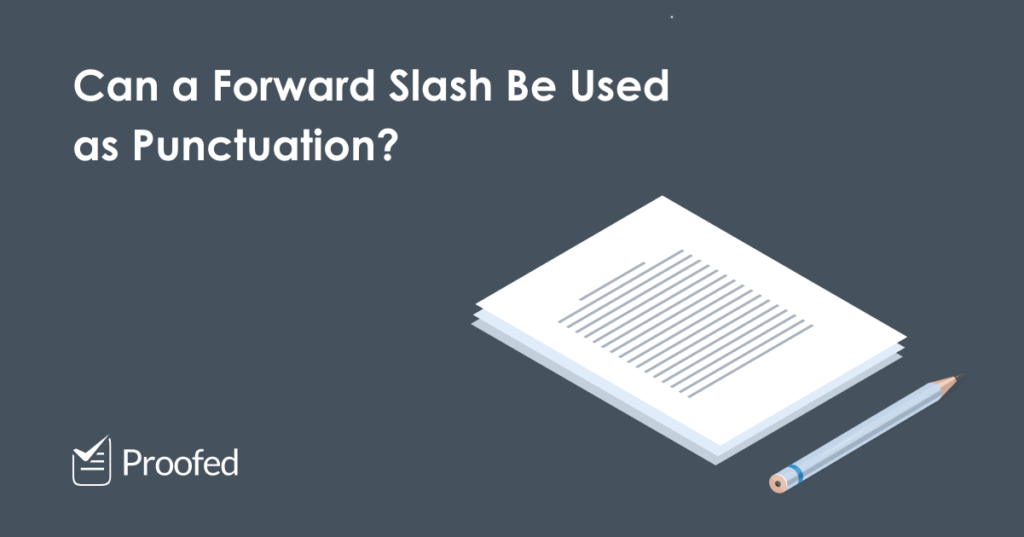Today, we’re looking at some oft-overlooked punctuation marks: the backslash and the forward slash. But wait! Did you know that only one of these is technically a punctuation mark? If not, you might find this guide useful!
Here, we look at what backslashes and forward slashes represent and how they should be used if you want to avoid errors when using them in your writing.
The Backslash
The slash that isn’t technically a “punctuation” mark we mentioned is the backslash ( \ ). It is a typographic mark (i.e., something you can type). But it doesn’t have a function in punctuation, and you will not find it in most writing.
The true home of the backslash is computing, where it is used in various programming languages. You’ll also see it if you look up a file directory in Windows (although not on Apple computers, which use a different system).
However, you shouldn’t typically need to use a backslash in your writing.
The Forward Slash
While the backslash is a specialist, the forward slash is a Jack-of-all-trades. Its most common use is to mean “or” when presenting two alternatives:
Each speaker will give a presentation on a topic of his/her choice.
The slash here shows that either word could apply. However, you should avoid doing this too often in formal writing, where “or” is a better choice.
Other common uses of the forward slash include:
Find this useful?
Subscribe to our newsletter and get writing tips from our editors straight to your inbox.
- Date formats (e.g., 03/27/2019 = March 27, 2019)
- Fractions or indicating division (e.g., 5/8 = five eighths)
- Indicating “per” in a measurement (e.g., 50 lbs/day = fifty pounds per day)
- Separating lines of poetry on a single line (e.g., I wandered lonely as a cloud/That floats on high o’er vales and hills)
- Certain abbreviations (e.g., c/o = care of, n/a = not applicable)
- URLs for websites (e.g., https://proofed.com/writing-tips/)
You may also see a forward slash used to indicate a relationship. For instance:
Soviet/US relations were tense throughout the 1960s.
This use of a slash is okay in less formal writing. In formal writing, however, you should use an en dash to indicate connections instead:
Soviet–US relations were tense throughout the 1960s.
There are some cases when a slash is the correct symbol use in formal writing (e.g., when one of the connected things is a hyphenated compound). Usually, though, an en dash is the standard punctuation for indicating a relationship like this.
Summary: The Backslash and Forward Slash
Although these symbols look similar, forward slashes and backslashes have different uses. Make sure to remember the following:
- The backslash (\) is mostly used in computing and isn’t a punctuation mark.
- The forward slash (/) can be used in place of “or” in less formal writing. It’s also used to write dates, fractions, abbreviations, and URLs.
Since the backslash is not a punctuation mark, you will rarely need it in writing. Thus, usually, the correct slash will be the forward slash. But if you’d like to be extra sure your writing is error free, we’re always here to help.
